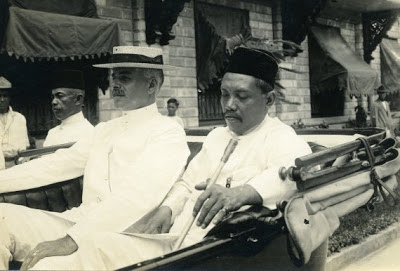The Government is spending a huge sum of money on research and development, especially in the areas of pure sciences, engineering, medical sciences and social sciences, including education, management, and sociology field.
The search for knowledge is the ever evolving nature of human beings, especially academicians whose livelihood depends on the depth, variety and impactful research they are embarking on.
Government-sponsored research grants always encourage developing human capital by involving potential postgraduate students in the research together with their academic supervisors who have sound track record of research and publications in their research domain.
Usually, the academic supervisors with their vast experience, exposure and reading in the areas of their interest, will co-develop the research framework with their postgraduate candidates in the initial stage of the research.
The postgraduate candidates may further fine tune the research framework and perform further rigorous testing before it is ready for data collection.
Once the data collection is completed and fruitful findings are established, the research framework becomes the intellectual property of the designers and the authors once it is published in a peer reviewed and high impact journal.
The issue of ownership of the intellectual property arises when it comes to primary authorship and supporting authorship if it is submitted for a journal publication or chapters in a book or even for a book publication.
There are many schools of thought to explain this, but, one thing to be remembered, treasured and cherished by those involved in the research is the synergised teamwork and wonderful relationship between the postgraduate candidate and the mentor that had created such a valuable intellectual property.
Can we allow such a noble relationship to be smeared or broken by raising ownership issues of the intellectual property and sequencing the authorship for the journals and books? Does the authorship sequence have any value if the relationship is broken or belittled?
Since there is no single doctrine to dictate who should be the primary author and the secondary author or third author, as all these involve emotions and ego. The act of producing a film based on a storybook is a good analogy.
When producing a film based on a good story, the whole team – director, photographer, stuntman, etc, put in effort to make the movie a success.
For example, the film Harry Potter, directed by David Heyman originated from a book written by J.K. Rowling.
In academic research, the postgraduate candidate should own the thesis which is the storybook in the case of a film.
When it is published in a journal, the authorship and its sequence of authorships should be based on the roles such as who had directed the development of the whole paper that should be given the primary authorship.
Then comes the respective individuals who created each component to make a manuscript for the journal publication.
If the academic supervisor crafted the whole manuscript and had received contributions from the postgraduate candidate and other researchers to satisfy the readership of a journal, then the academic supervisor can be the main author.
The origin of the research thesis is still owned by the postgraduate candidate, and he or she can take turns to craft another manuscript after learning the ropes of writing to a journal which needs mindful amendments a few times before it gets published.
The important matter here is all will be given due recognition based on the efforts to create a wider readership.
Therefore, the intellectual property ownership and authorship sequence issue should not overcrowd or destroy the research spirit that has primary importance in the development of human capital in the country.
Academicians have been working very hard towards that goal since the establishment of the universities.
DR SHANKAR CHELLIAH Universiti Sains Malaysia, Penang
Related posts:
Distinguishing research authorship and ownership rights







